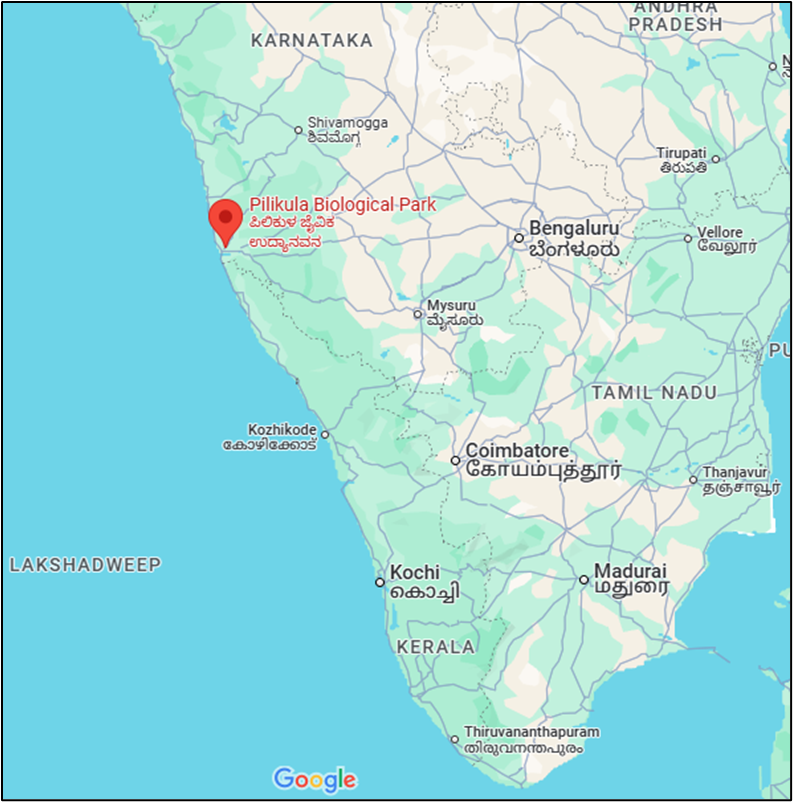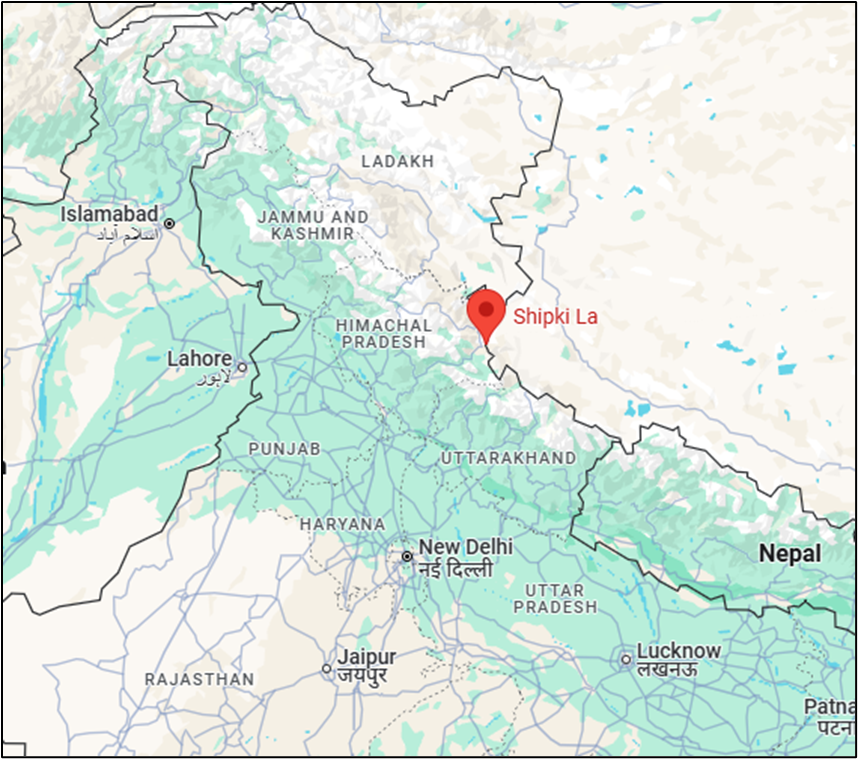- Courses
- GS Full Course 1 Year
- GS Full Course 2 Year
- GS Full Course 3 Year
- GS Full Course Till Selection
- Answer Alpha: Mains 2025 Mentorship
- MEP (Mains Enrichment Programme) Data, Facts
- Essay Target – 150+ Marks
- Online Program
- GS Recorded Course
- Polity
- Geography
- Economy
- Ancient, Medieval and Art & Culture AMAC
- Modern India, Post Independence & World History
- Environment
- Governance
- Science & Technology
- International Relations and Internal Security
- Disaster Management
- Ethics
- NCERT Current Affairs
- Indian Society and Social Issue
- NCERT- Science and Technology
- NCERT - Geography
- NCERT - Ancient History
- NCERT- World History
- NCERT Modern History
- CSAT
- 5 LAYERED ARJUNA Mentorship
- Public Administration Optional
- ABOUT US
- OUR TOPPERS
- TEST SERIES
- FREE STUDY MATERIAL
- VIDEOS
- CONTACT US
PLACES IN NEWS 19th June 2025
PLACES IN NEWS 19th June 2025
19-06-2025

1. Pilikula Biological Park

Why in the News?
- Pilikula Biological Park in Karnataka had recently contributed a male king cobra to Madhya Pradesh as part of an inter-state wildlife conservation effort.
- The king cobra was sent to Van Vihar National Park in Bhopal under the project to reintroduce the species in the state.
- The snake died under unclear circumstances, despite being housed in a temperature-controlled enclosure.
What are the Key Highlights of the Pilikula Biological Park?
- Geographical Location:
- State: Karnataka
- District: Dakshina Kannada
- City: Mangaluru (Mangalore)
- River: Gurupura River
- Coordinates: 12.9310° North latitude, 74.9029° East longitude
- Altitude: Approximately 100 metres above sea level
- Pilikula Biological Park Overview:
- The Pilikula Biological Park is a major attraction within Pilikula Nisarga Dhama (Integrated Eco-education, Conservation, and Tourism Development Project).
- It spans 150 acres and has been recognized as a major zoo by the Central Zoo Authority of India.
- The park is considered one of the most aesthetically designed zoological premises in the country.
- It meets modern international standards for zoo management.
- Objectives and Conservation Goals
- Display a broad taxonomic range of wild animal species with a focus on Western Ghats fauna.
- Conserve and breed endangered species for display, exchange, breeding loans, and reintroduction into the wild.
- Serve as a rescue center for orphaned wild animals in the region.
- Animal Enclosures and Facilities:
- Animals are kept in spacious enclosures that closely resemble their natural habitats.
- The zoo houses around 1200 animals belonging to 120 different species, including mammals, reptiles, and birds.
- Pilikula has the distinction of being the only zoo in India to successfully breed the King Cobra in captivity.
- The park also breeds several endangered species native to the Western Ghats.
- Veterinary and Support Infrastructure
- The park has a modern veterinary hospital complex with facilities such as:
- Quarantine and post-treatment wards
- A post-mortem block
- X-ray and ultrasound scanning equipment
- The Central Zoo Authority funded the construction of the hospital complex.
- The park has a modern veterinary hospital complex with facilities such as:
- Ecological and Biodiversity Features
- The park is covered with dense vegetation, providing a natural habitat for many wild animals.
- It supports a wide variety of free-ranging wildlife, including mammals, reptiles, amphibians, and insects.
The park is also a nesting ground for over 70 species of birds.
- Educational and Scientific Contributions
- The zoo serves as an educational hub for students of all ages to learn about wildlife and conservation.
- It promotes public awareness of wildlife and the need to protect natural habitats.
- The park supports research and scientific studies beneficial to zoo and wildlife management.
- Recreational Role
- Pilikula Biological Park offers wholesome and educational recreation by utilizing its natural features.
- It blends entertainment with awareness, making it a family-friendly destination with a conservation message.
2. Shipki La pass

Why in the News?
- Shipki La Pass is a motorable mountain pass opened to Indian tourists without permit (only Aadhaar card needed).
- Move seen as a step to revitalise tourism and trade in the region.
What are the Key Highlights of the Shipki La Pass?
- Geographical Location
- State: Himachal Pradesh
- District: Kinnaur
- Altitude: Approx. 3,930 metres (12,894 feet) above sea level
- Coordinates: 31.8161° N, 78.7534° E
- Location Features
- Type: High-altitude mountain pass in the Himalayas
- River: The Sutlej River enters India from Tibet near Shipki La
- Border: Connects India (Himachal Pradesh) with Tibet (China)
- Strategic Role: One of the few Indo-China land border passes used historically for trade and pilgrimage
- Reasons for Closure
- Disrupted after the 1962 Sino-India War.
- Further breakdowns after Doklam standoff (2017) and COVID-19 pandemic.
- Trade routes remain shut for commercial exchange, despite tourism access.
- Goods Traded Historically
- Imports from Tibet: wool, yak products, livestock, borax, turquoise, gold, and religious items.
- Exports to Tibet: grains, pulses, spices, timber, utensils, dried fruits, tobacco, copper, iron tools.
- Trade supported local craftsmanship (e.g., Kinnauri jewellery using turquoise and gold).
- Significance of Recent Tourism Access
- Boosts religious tourism: can shorten Delhi to Mansarovar route by 14 days.
- Potential to increase employment, promote the hospitality sector, and revive the regional economy.
- May become a soft diplomacy tool and a community-led trust-building model.
- Cultural and Civilisational Connections
- Shared lifestyle between Kinnaur and Tibet: pastoralism, surnames (e.g., Namgyal), and Buddhism.
- Common festivals, monastic traditions, and oral heritage preserve cross-border continuity.
- Cultural ties are based on shared civilisation, not bloodline (unlike India-Pakistan border).
- Strategic and Diplomatic Relevance
- Although trade volume through land passes is limited, the symbolic and developmental value is high.
- Could serve as a peace corridor and model for grassroots diplomacy.
- Kinnaur Indo-China Trade Association has appealed to reopen trade; CM promised to raise the matter with MEA.



